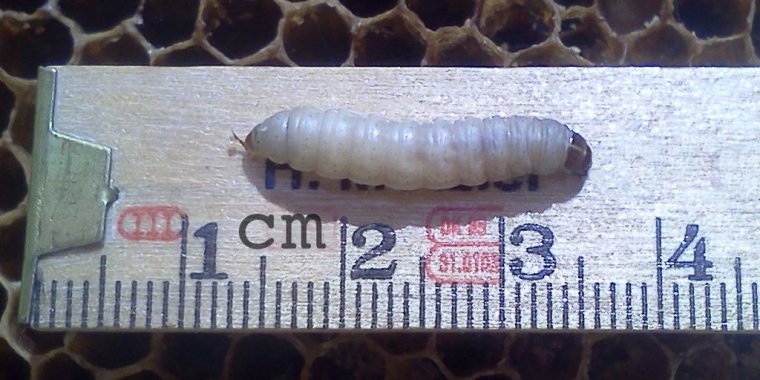| News / Science News |
Plastic Eating Worm Could Help Ease Pollution
A type of worm could help solve the growing problem of plastic pollution.

The larva of Galleria mellonella. ![]()
The common wax worm, or Galleria mellonella, researchers say, can eat plastic and could help reduce the waste caused by the one trillion polyethylene plastic bags used around the world annually.
"We have found that the larva of a common insect, Galleria mellonella, is able to biodegrade one of the toughest, most resilient, and most used plastics: polyethylene," says Federica Bertocchini of the Institute of Biomedicine and Biotechnology of Cantabria in Spain.
The discovery about the caterpillar’s hunger for plastic was accidental, said Bertocchini, adding that the plastic bags containing the wax worms “became riddled with holes.”
She said the worms can “do damage to a plastic bag in less than an hour.” And after 12 hours, researchers saw “an obvious reduction in plastic mass.
They also found that the worms transformed polyethylene into ethylene glycol, an organic compound used in making polyester fibers as well as antifreeze. It is unclear if the worms produce enough to be commercially viable.
Plastic is not the natural food of the wax worm, but researchers say that since they lay their eggs in beehives, the hatchlings feed on beeswax.
"Wax is a polymer, a sort of 'natural plastic,' and has a chemical structure not dissimilar to polyethylene," Bertocchini says.
Researchers say they still need to better understand how wax is digested, but that finding out could lead to a biotechnological solution to plastic waste.
"We are planning to implement this finding into a viable way to get rid of plastic waste, working towards a solution to save our oceans, rivers, and all the environment from the unavoidable consequences of plastic accumulation," Bertocchini says. "However," she adds, "we should not feel justified to dump polyethylene deliberately in our environment just because we now know how to biodegrade it."
The study was published in the journal Current Biology. (VOA)
YOU MAY ALSO LIKE





